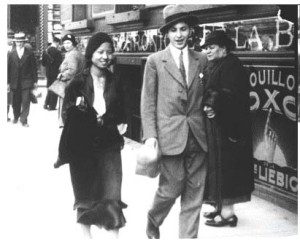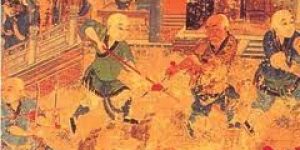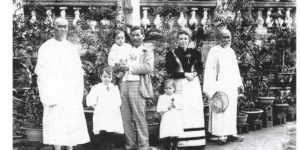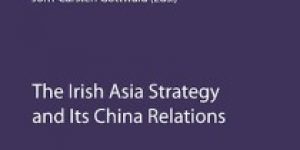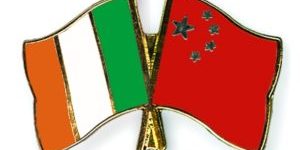The History And Context Of Chinese~Western Intercultural Marriage In Modern And Contemporary China (From 1840 To The 21st Century)
No comments yetTable of Content
Abstract
Chapter One – Introduction
Chapter Two – An Intellectual Journey: The Theoretical Framework
Chapter Three – Mapping the Ethnographic Terrain: The Methodological Framework
Chapter Five – The Process of Chinese-Western Intercultural Marriage in Contemporary China
Chapter Six – Why do they marry Westerners? Motivations and Resource Exchanging in Chinese-Western Intercultural Marriages
Chapter Seven – Conflicts and Adjustments in Chinese-Western intercultural Marriage: A Cultural Explanation
Chapter Eight – Epilogue
Bibliography
Appendix I: Interview Questions Guide
Appendix II
Abstract
Intimate relationships between two people from different cultures generate a degree of excitement and intrigue within the couple due to that very difference, however this also brings its own challenges. Intercultural marriage adds an extra set of dynamics to relationships. Although the Chinese culture is very different from Western culture, individuals from both nevertheless meet and fall in love with each other. The existence of intercultural marriages and intimacy between Chinese and Westerners is evident and expanding in societies throughout both China and the Western world. This thesis aims to present a true picture of Chinese-Western Intercultural Marriage (CWIM) with a focus on the Chinese perspective.
By employing a three-dimensional, multi-level theoretical framework based on an integration of theories of migration, sociology and gender and adopting a qualitative research paradigm, the main body of this study combines three theoretical approaches in order to explore CWIM fully using a panoramic view. The first part of the study is conducted from a macro-level perspective. It provides a historical review of intercultural marriage and transnational marital systems in Chinese history from the modern to the contemporary era through a discussion of the different characteristics of CWIM. The context and background of Chinese intercultural marriages in modern and contemporary China are also reviewed and analysed, such as the related regulations, laws, governmental roles, and so on.
The second section is conducted from a middle-level perspective. On the basis of the study’s fieldwork, the demographic characteristics of the respondents are first disclosed, and different patterns are identified as occurring in CWIM. The approaches to and motivations of CWIM are examined, and a framework of CWIM Push-Pull Forces and a model of Resource Exchanging Layers are established to explain how and why Chinese people have married Westerners. The exchanges and Push-Pull force components operating in Chinese-Western intercultural marriages are also discussed.
The third section offers a micro-level examination of the research, and it moves on to discuss the family relations in Chinese-Western intercultural marriage, particularly with the entrance of a member of a different culture into the Chinese familial matrix. This part of the study focuses on cultural conflicts, origins and coping strategies in Chinese-Western intercultural marriage with an emphasis on the experiences of Chinese spouses. Five areas of marital conflicts are revealed and each area is analysed from a cultural perspective. The positive functions of conflicts in CWIMs are then explored. The six coping strategies and their frequencies of usage by Chinese spouses are further examined.
The final chapter will summarise the points examined previously and will unravel the factors underlying CWIM by recapitulating the symbolic significance, social functions and gender hegemony represented in Chinese-Western intercultural marriage. In this way this study will provide more than an anecdotal description of Chinese-Western Intercultural marriage, but will present a profound analysis of the forces underpinning this cross-cultural phenomenon.
Key Words: Chinese-Western Intercultural marriage, History, Cultures, Motivation, Exchange, Marital Choice, Conflicts.
List of Abbreviations
CCP – Chinese Communist Party
CCW – Chinese Civil War
CH – Chinese Husband
CPC – Communist Party of China
CHWW – Chinese husbands & Western wives
CW – Chinese Wife
CWIM – Chinese-Western Intercultural Marriage
CWWH – Chinese wives & Western husbands
DIL – Daughter in Law
EU – European Union
FAO – Food and Agriculture Organization of the United Nations
FS – Foreign Spouses
IC – Intensity of Conflict
KMT – Kuomintang (Chinese Nationalist Party)
LS – Local spouses
MIL – Mother in Law
MM – Marital Migrants
PRC – People’s Republic of China
ROC – Republic of China
TP – Third Parties Records
USSR – Union of Soviet Socialist Republics
VC – Violence of Conflict
CWWH – Marriage of Chinese Wife and Western Husband
CHWW – Marriage of Chinese Husband and Western Wife
WPA – Western Physique Attraction
You May Also Like
Comments
Leave a Reply
